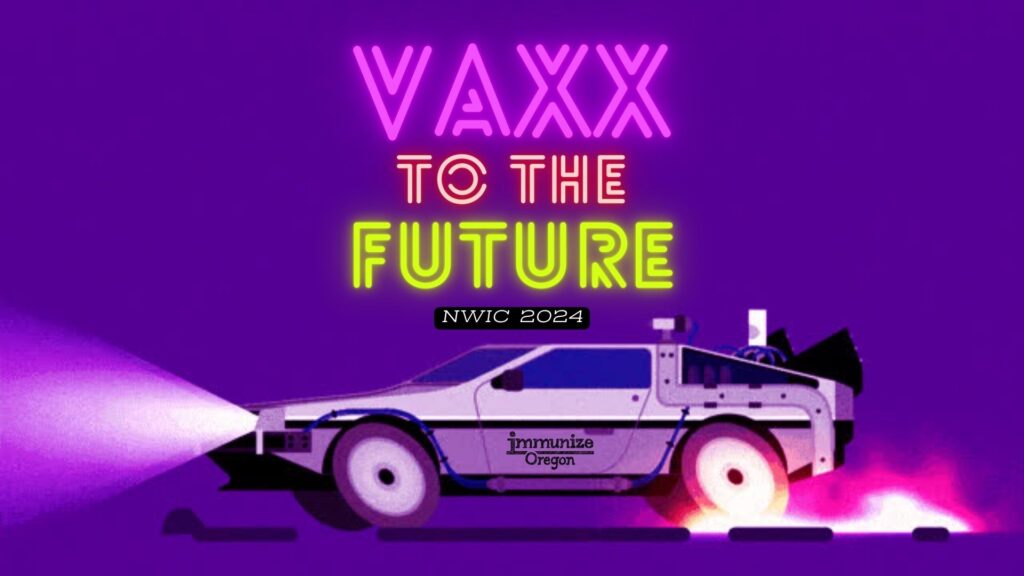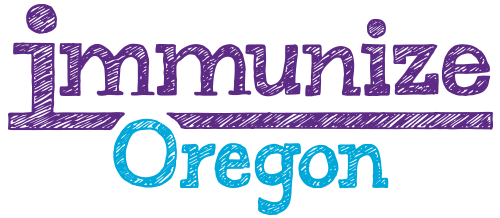Join us virtually this September for the Northwest Immunization Conference 2024
Register Today
Learn more about NWIC2024 in our community platform
Questions? Email us at [email protected]
Registration Now open
- Overview
- Conference Presentations
- Speakers
Overview
The Northwest Immunization Conference (NWIC) is an annual event bringing together local, regional, and national specialists to learn the latest information on immunizations and vaccine issues impacting health care practices. The curriculum is designed for a diverse field of health professionals, including immunization providers, public health advocates, epidemiologists, students of nursing and medical professions, and program managers seeking a comprehensive knowledge of immunizations.
workshop & Training Topics
- Strategies to address vaccine hesistancy
- Focus on vaccine access & health equity
- Reviewing vaccine-specific updates
- Educational workshops
- Clinical skill building training
NWIC 2024 conference Agenda
Conference Presentations and Slides will be posted on the Immunize Oregon community platform once available.
Contact Molly Sax ([email protected]) with any questions or concerns.
September 5th
10:00 am – 11:00 am
Back to Basics! A Review of Vaccine Administration Best Practices with Jill Johnson
An understanding of best practices related to vaccine administration is essential to ensure safe and on-time vaccinations. On-going education provides support for all staff involved in immunization services and provides an opportunity for programs to improve upon current policies and practices. Preparing for patient vaccinations, proper administration, patient comfort considerations, preventing vaccine errors and high impact strategies to improve vaccine uptake will be discussed.
September 9th
11:00 am – 12:00 pm
Empathy in Action: Fostering Positive Vaccine Conversations Across Cultures with Carrie Bader and Ari O’Donovan
Vaccine hesitancy is often connected to cultural identity, and can be rooted in a wide range of factors, including historical trauma, religious practices, and/or political beliefs. Health care providers and other vaccinators often do not receive training on addressing these topics in vaccine conversations, and understandably may avoid these topics and not know how to handle them if they arise. In this session, we will review specific examples of culture-based reasons for vaccine hesitancy, how to broach this topic in a respectful manner, and how to use skills of Motivational Interviewing (MI) to promote vaccination in a culturally-sensitive manner.
September 11th
12:00 pm – 1:00 pm
Hit Me with Your Best Shot: Immunizations for Immunocompromise and Complex Disease States with Holly Van Lew
This presentation will explore the intricacies of immunocompromise caused by disease and drug therapies, and define temporary versus permanent immunocompromise. We will also discuss general principles of vaccines in immunocompromised populations, including effectiveness, indications, contraindications, and considerations when administering vaccines in these specialty populations.
September 12th
12:00 pm – 1:00 pm
Increasing HPV Vaccination Rates through Postpartum Vaccination Catch-Up Programs with Dr. Amanda Bruegl
HPV vaccination rates are not at goal in the United States. Postpartum vaccination is an opportunity to provide catch-up vaccination for women.
September 16th
3:00 pm – 4:00 pm
Vaccine hesitancy and the motivated rejection of science: What motivates young people to take a vaccine? with Laura Ferris
Despite extensive evidence to the contrary, significant portions of the public worry that the health risks of vaccines outweigh the benefits. Drawing on data from around the world, I first describe the psychological profile of the vaccine hesitant, and explain why merely providing evidence is not always sufficient to change minds. I briefly describe a model of persuasion that places emphasis on aligning with (rather than competing with) people’s underlying ideologies, anxieties, and identity needs. Next, I shift gears to discuss motivations in favour of vaccine uptake. Vaccine uptake does not take place in social isolation; rather, these decisions are informed by a complex interplay of factors including regulatory environments, and perceptions of what others think and do. I share findings from a longitudinal field cohort study of COVID-19 vaccine uptake, non-pharmaceutical adherence, and vaccine-related attitudes from a sample of young people attending a large mass gathering event in Australia in 2021. Quantitative findings reveal high uptake with unexpected downstream consequences, while qualitative findings articulate motivations around adhering to vaccine mandates from the perspectives of young people themselves.
September 17th
12:00 pm – 1:00 pm
Should we use two year old immunization rates to measure equity in care? Milestone analysis as a better measures for equity and quality with Steve Robison
Despite extensive evidence to the contrary, significant portions of the public worry that the health risks of vaccines outweigh the benefits. Drawing on data from around the world, I first describe the psychological profile of the vaccine hesitant, and explain why merely providing evidence is not always sufficient to change minds. I briefly describe a model of persuasion that places emphasis on aligning with (rather than competing with) people’s underlying ideologies, anxieties, and identity needs. Next, I shift gears to discuss motivations in favour of vaccine uptake. Vaccine uptake does not take place in social isolation; rather, these decisions are informed by a complex interplay of factors including regulatory environments, and perceptions of what others think and do. I share findings from a longitudinal field cohort study of COVID-19 vaccine uptake, non-pharmaceutical adherence, and vaccine-related attitudes from a sample of young people attending a large mass gathering event in Australia in 2021. Quantitative findings reveal high uptake with unexpected downstream consequences, while qualitative findings articulate motivations around adhering to vaccine mandates from the perspectives of young people themselves.
September 18th
12:00 pm – 1:00 pm
During influenza vaccine production in fertilized hen’s eggs, influenza vaccine viruses sometimes acquire egg-adaptive mutations in key viral sites that can result in antigenic mismatch to circulating viruses and may contribute to reduced vaccine effectiveness. Several recently published studies have demonstrated improved effectiveness of cell-based quadrivalent influenza vaccines (QIVc) compared with egg-based quadrivalent influenza vaccines (QIVe) in preventing influenza-related medical encounters in primary care and hospital settings. However, there are limited data using test-confirmed influenza outcomes. The objective of this study was to estimate the relative vaccine effectiveness (rVE) of QIVc versus QIVe in preventing test-confirmed influenza among individuals aged 4-64 years in the outpatient care setting, during the 2017-18, 2018-19, and 2019-20 influenza seasons in the United States
&
Due to the need for improved protection against influenza for older adults, the US Advisory Committee on Immunization Practices (ACIP) has recommended adults aged ≥65 years receive either an adjuvanted or higher-dose influenza vaccine as of the 2022–2023 influenza season. A prior systematic literature reviews and meta-analysis of real-world evidence studies supports the comparable vaccine effectiveness of MF59-adjuvanted trivalent inactivated influenza vaccine (aTIV) and high-dose trivalent inactivated influenza vaccine (HD-TIV) for the prevention of influenza-related medical encounters as identified using clinical diagnostic codes.2 This study built on prior evidence focused on clinical diagnosis based outcomes by evaluating the relative vaccine effectiveness (rVE) of aTIV vs HD-TIV for prevention of test-confirmed influenza emergency department visits and/or inpatient admissions and for inpatient admissions alone pooled across the 2017–2020 influenza seasons. Exploratory individual season analyses were also performed.
September 19th
12:00 pm – 1:00 pm
Preparing for the Fall Respiratory Season: Vaccines and Recommendations with Jill Johnson & A Unified Approach to Respiratory Illness Vaccination in a Post-Pandemic World with Samantha Seaman and Clara Varndell
A flood of information about COVID-19, RSV and flu vaccine products and recommendations flows in at the beginning of the fall respiratory season. An understanding of available products and associated recommendations helps support provider understanding and subsequent vaccination efforts. Early September is a good time to discuss the recommendations in preparation for the upcoming season
&
Data shows vaccine fatigue is a growing concern in a post-pandemic world. This was especially noticeable in the fall of 2023 when the 2023-2024 updated COVID-19 vaccines emerged. The public, and media, were seemingly moving on from vaccine conversations at a time when COVID-19 and other preventable respiratory illnesses were still a threat to public health. Privatization of the COVID-19 vaccine led to concerns of barriers to public access, and pandemic grant funding began to phase out programs and staffing. Local health jurisdictions, providers and other stakeholders shared concerns about how to sustain robust immunization efforts in the face of uncertainty.
Local health staff relayed concerns that they were unable to create new material themselves, especially when it came to accessibility costs such as translation and transcreation. Limited staffing, small budgets and available time were considerable barriers.
From conversations with those partners, a shared desire emerged for a comprehensive suite of immunization health education materials that LHJs, tribes, and other partner organizations could use with their own branding to address the unique needs of their diverse communities to increase vaccine uptake and help communicate access.
In response, we developed a toolkit of co-brandable templates to unify vaccine messaging and build capacity for partners to deploy health education and strengthen vaccine recommendations, encourage providers and pharmacists to initiate vaccine confidence conversations at every opportunity, and inform older adults about coadministration opportunities and access for newer vaccines such as COVID-19 and RSV.
Co-brandable immunization material on this scale had never been attempted before but had long been requested from stakeholders. This approach would address community partner needs meticulously – in a multitude of languages, formats, and forms.
We combined our most popular and effective health education materials on respiratory vaccines into one resource. We then re-tooled and updated them to include drop-in spaces for stakeholder logos/affiliation and publication dates on each component. This ensured content would be current and aligned with a changing landscape of vaccine recommendations. We included materials in English and 16 additional languages to meet the needs of communities across Washington.
This toolkit allows statewide vaccination partners to more effectively distribute materials, promote vaccination, and educate the public on respiratory disease prevention regardless of capacity concerns.


